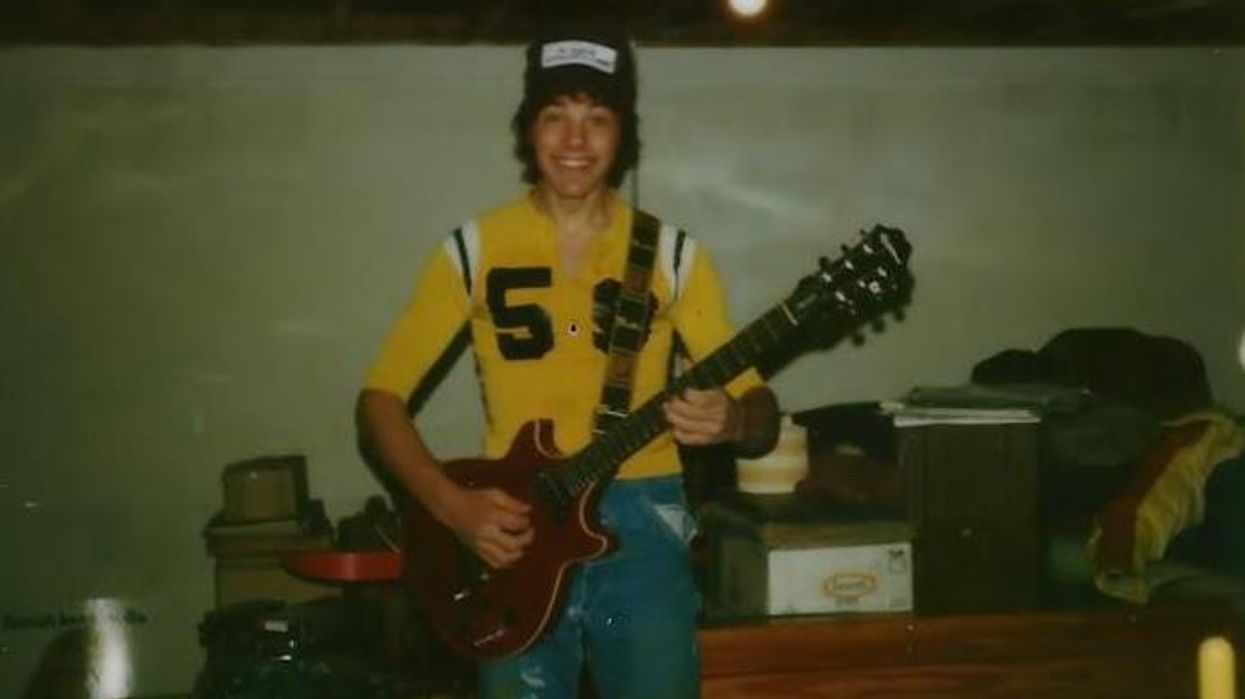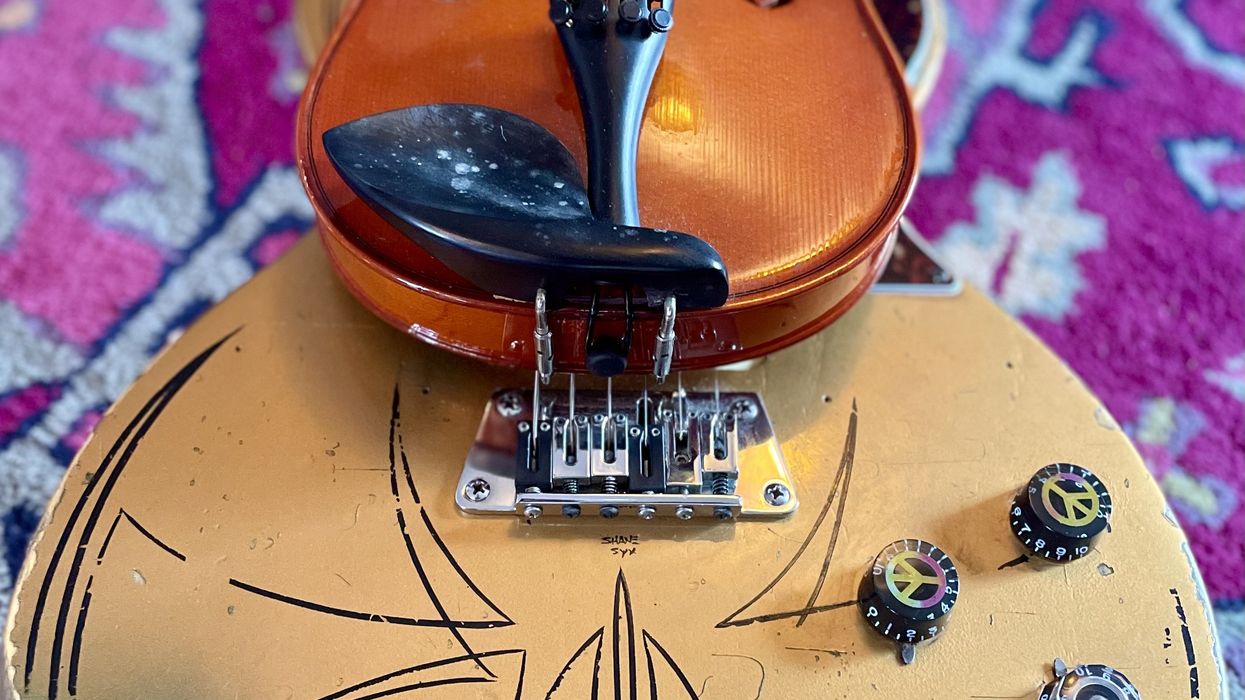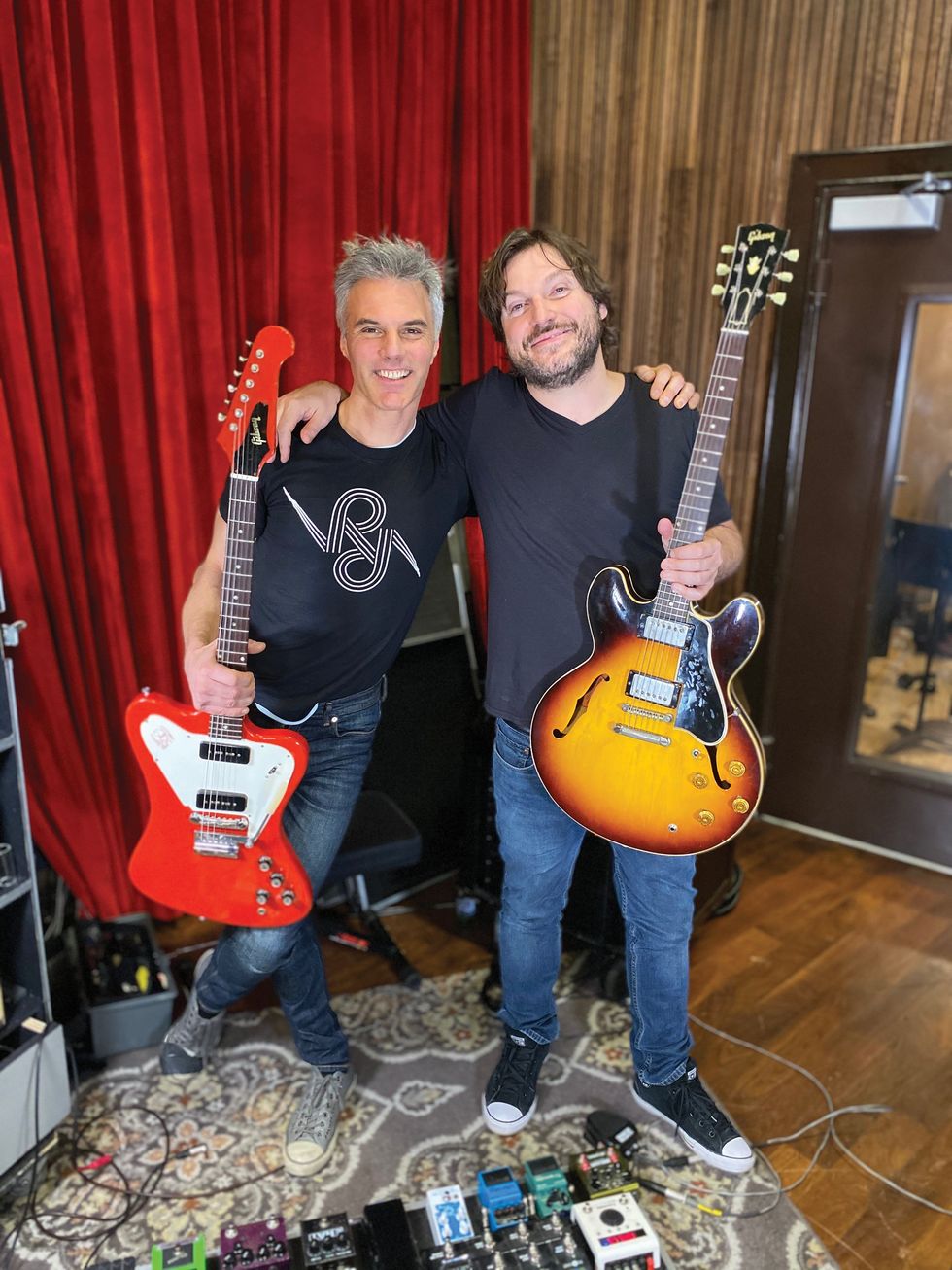In last month’s column [“Siren Songs,” August 2017], I shared the story about my affinity for modern pop-country and how it played a big part in my moving to Nashville 17 years ago. The female pop-country acts from the late ’90s and early 2000s were making albums with music, songwriting, and bass playing that really spoke to me on many different levels—especially the Mutt Lange-produced Shania Twain albums. Whether he programmed synth bass (as was increasingly common on her later albums) or hired bassists, Lange’s rigid, simple, and disciplined personal touch is very much heard in the low end on Shania’s material.
David Hungate played the bass tracks on her first monumentally successful album The Woman in Me, and it was Joe Chemay who handled the bass duties for the following two multi-platinum albums, Up! and Come on Over. To continue our tour of excellence in pop-country bass playing, let’s take a look at a few more Shania songs that were played by these two session greats.
“Whatever You Do! Don’t!” This bass line schools me every time I sit down to play it. The song is a deep album cut towards the end of Come on Over. I always play this line with a pick because it helps me with the evenness and rigidity it needs. The first verse is quite different for a Lange production since it’s pretty much just bass, drums, and vocals. The bass pattern is chromatically descending with perfect note length on the quarter-notes, but there are also pickup notes surrounding the chromatic progression that help spice up the line and push it into the realm of funkiness. The second verse features the same chord progression, but with slightly different pickup notes.
The choruses switch to a very legato approach, which completely opens up the song. The bass accentuates the shuffle feel by swinging the eighth notes throughout the chorus while also walking, using a great mix of chord tones and approach notes. The chorus seems like it is quarter-note based at first, but you can really feel how the bass shuffles while it walks the more you listen.
“Love Gets Me Every Time” Last month, I touched on Mutt’s obsession with cutting the half-notes right where the snare drum hits, which effectively makes them quarter-notes. (The stiffest and most efficient of his grooves are all based on this approach.) Learning this song on Come on Over will take a minimal amount of time, though you might wonder at first listen why I use it as an example since it’s not necessarily eventful.
But once you learn the simple chord progression and focus all your energy on simply cutting off every note exactly on the snare hits and exactly where it is on the recording, your feeling of being inside the seemingly simple groove will be hypnotic. You’ll also have a renewed sense of note-cutoff importance, which makes every bassist better.
“Whose Bed Have Your Boots Been Under?” This song on The Woman in Me is a master class in country music bass playing. Every single note of the bass part is completely locked in with the left hand of the piano for a classic, country shuffle feel that—unless you are a straight-up country bassist for your main gig—is not very easy to nail at all. The first thing to notice is how each note is cut off just slightly before the next note, instead of a completely seamless legato feel that is common in this type of groove. I would almost describe it as a sixteenth-note rest that makes the whole shuffle bounce a little harder, without sacrificing the fluidity the song needs.
When it comes to note choice, there are some great discoveries to be made here. The bass part is based on a root, 3, and 5 pattern on most of the chords, but the exceptions are notable and interesting. In the third chord of the chorus—a C minor—the part switches to playing root, root, low 5, and low b7. It’s a common pattern in many songs, but it really twists the ear in the middle of all those triads being played. History is full of great country shuffles, but this one has a touch of modern hipness to it while still tipping the hat to the tradition and rules of the style.
“(If You’re Not in It for Love) I’m Outta Here!” The verse of this song on The Woman in Me utilizes a standard modern-country groove that is perfect in a variety of places. It’s a two-measure, fairly basic kick-drum pattern that has the bass playing with the kick on beats 1 and 3 in the first measure, and beats 1, the and of 2, and beat 3 in the second measure.
Needless to say, the notes are all cut on the snare (you probably got that memo by now), but the song has a less rigid feel and even borders on swampy.
I hope a few of you who would never think to practice to Shania Twain’s music take the challenge. There’s a good reason why the guy who produced these songs is one of the most successful producers in history.










![Rig Rundown: Russian Circles’ Mike Sullivan [2025]](https://www.premierguitar.com/media-library/youtube.jpg?id=62303631&width=1245&height=700&quality=70&coordinates=0%2C0%2C0%2C0)



![Rig Rundown: AFI [2025]](https://www.premierguitar.com/media-library/youtube.jpg?id=62064741&width=1245&height=700&quality=70&coordinates=0%2C0%2C0%2C0)




